Hardscaping Ideas to Enhance Your Collingwood Garden
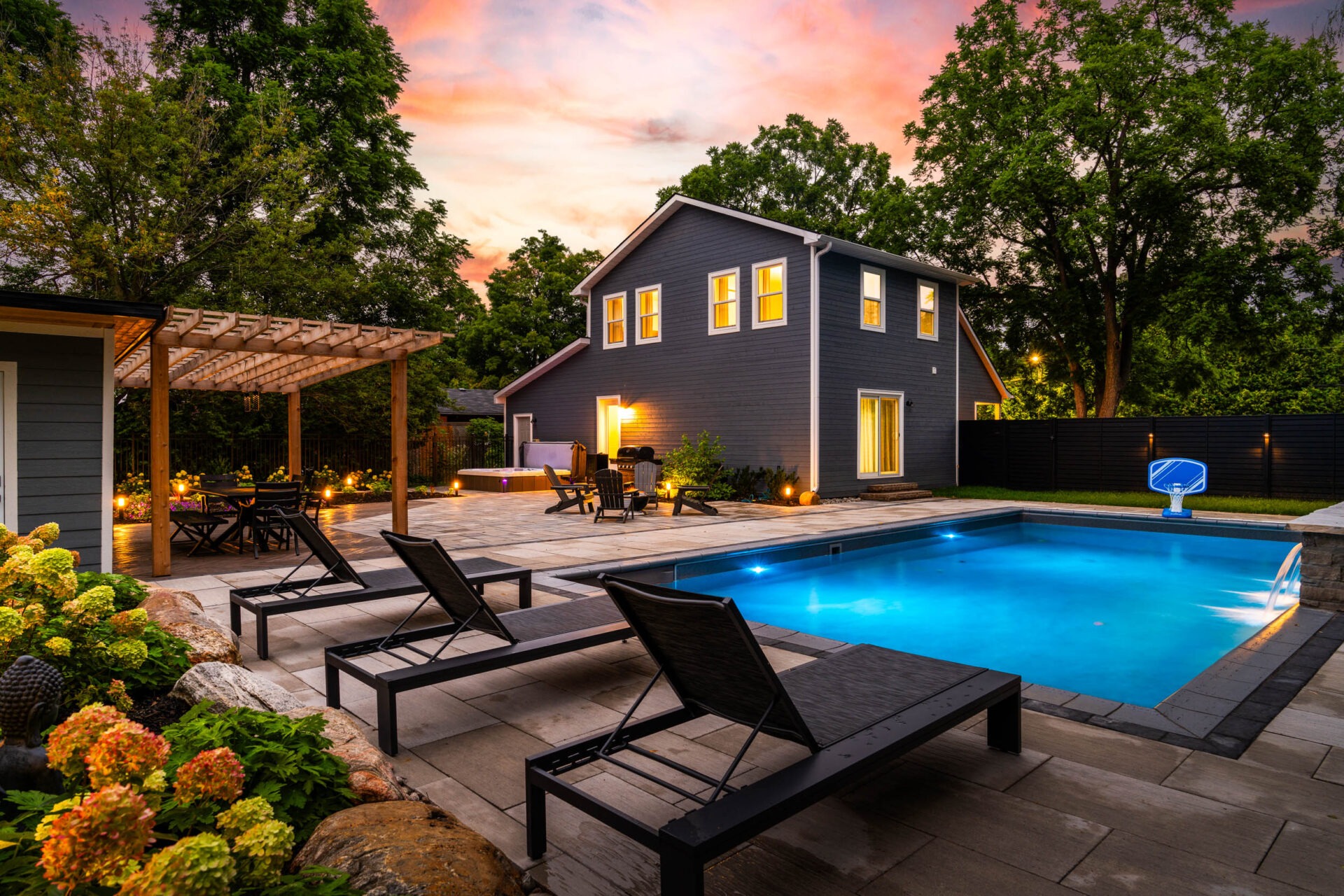
Hardscaping Ideas often begin as a vision of a more usable, attractive yard, yet it can be daunting to bring that vision to life in Collingwood’s demanding climate. Many homeowners invest in beautiful plantings only to watch them fade in winter, or they pour concrete patios that crack and heave after a few freeze-thaw cycles. The result is frustration, wasted money, and outdoor spaces that feel disconnected from the natural beauty of Georgian Bay. In Collingwood, you’re dealing with cold, snowy winters, wet springs, warm summers, and cool autumns; your materials must withstand shifting temperatures and moisture while still looking inviting.
It doesn’t have to be such a challenge. By focusing on durable materials, proper drainage, and thoughtful design, you can create outdoor rooms you’ll enjoy year-round. This series will show you how to choose the right elements like patios, seating areas, retaining walls, pathways, and low‑maintenance features, so you can relax instead of repair. Each article draws from our holistic approach at Garden Holistics, rooted in sustainability and a deep respect for the local environment. You’ll learn how to make strategic choices that keep your garden functional and beautiful through all four seasons.
What Are the Best Hardscaping Ideas for Collingwood’s Four‑Season Climate?
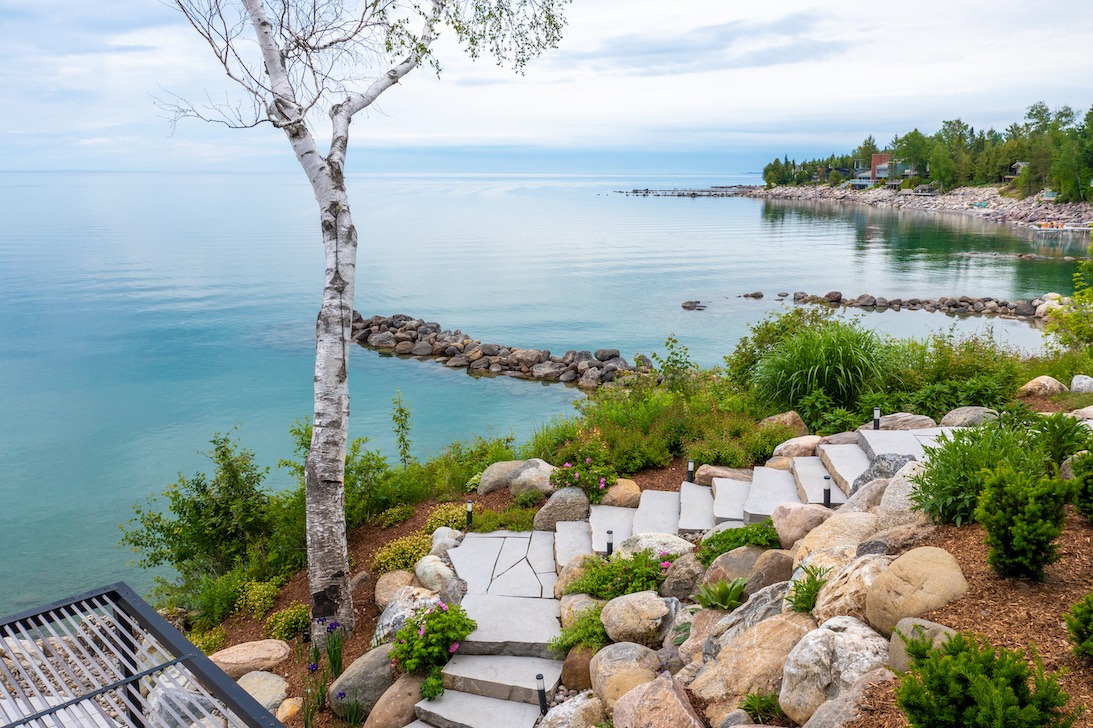
Creating a year‑round landscape in Collingwood starts with understanding the stresses your yard faces. Warm summers are followed by long, snowy winters with temperatures that swing between -10 °C and 25 °C. Those freeze‑thaw cycles can shift pavers, crack concrete, and even push poorly anchored walls out of alignment. To avoid costly repairs, choose resilient surfaces like natural stone and quality concrete pavers set on a well‑compacted base. These materials flex slightly and allow moisture to drain, preventing heaving and cracking. A permeable patio made from interlocking pavers also helps meltwater run off rather than pool and refreeze.
Beyond materials, think about structure. Include retaining walls or raised beds to tame slopes and prevent erosion; use native evergreens and ornamental grasses around them for winter interest. Plan multiple seating zones connected by textured pathways so you can enjoy different parts of the yard as the seasons change. Incorporate lighting for safety on long winter nights and to highlight stone textures after dusk. Most of all, drainage design: every patio, wall, and path should slope gently away from structures and include gravel bases or drain tiles to move water safely. With these simple principles, your outdoor space will weather every season gracefully.
How Can Patios & Seating Zones Elevate a Collingwood Backyard?
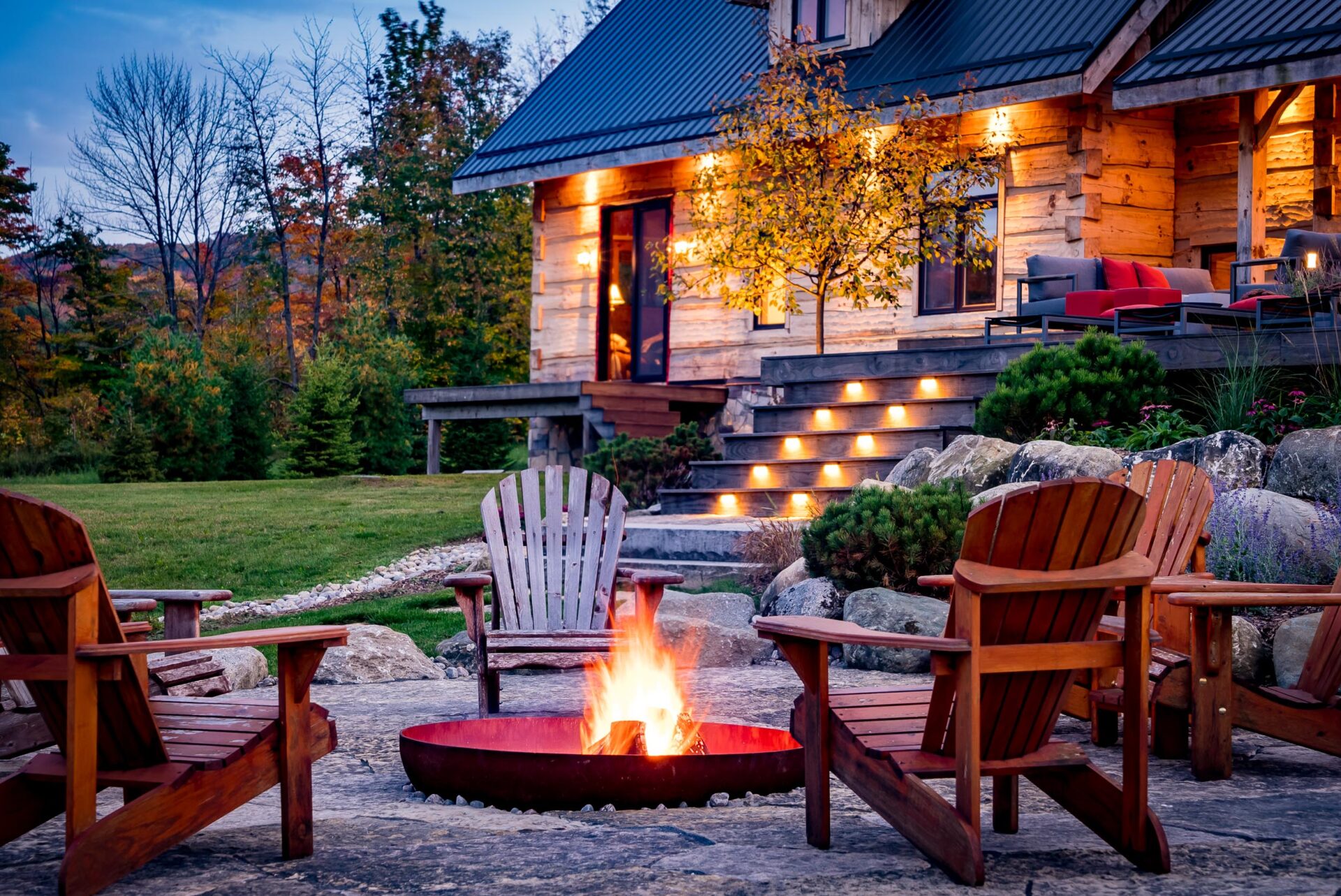
A well‑designed patio does more than provide a place to sit; it ties your home into the landscape and encourages you to spend time outside regardless of the season. Start by defining how you’ll use the area, like dining, lounging, and cooking, and then lay out distinct zones. For example, one corner could host a barbecue and prep counter, while a recessed nook houses a fire feature for cooler evenings. Seat walls built from the same stone as your patio double as both retaining structures and benches, saving space and eliminating the need to store bulky furniture during the winter.
Vary the surfaces underfoot to add character and safety. Smooth flagstone or pavers make dining areas comfortable, while gravel or wooden decking under lounge chairs provides texture and better drainage. Overhead, pergolas or timber-framed pavilions offer shelter from sun and snow; incorporate retractable screens or shades for year‑round flexibility. For warmth, consider radiant heaters mounted under rafters or a masonry fireplace that anchors the space and creates a focal point. Thoughtful lighting like recessed step lights, lanterns, and string lights will make your patio welcoming on long winter nights. If you’re interested in professional help designing such spaces, explore our patio projects to see how these ideas come together. A cohesive patio and seating area transform your yard into an inviting outdoor extension of your home.
Which Retaining Wall Designs Add Function & Curb Appeal on Sloped Lots?
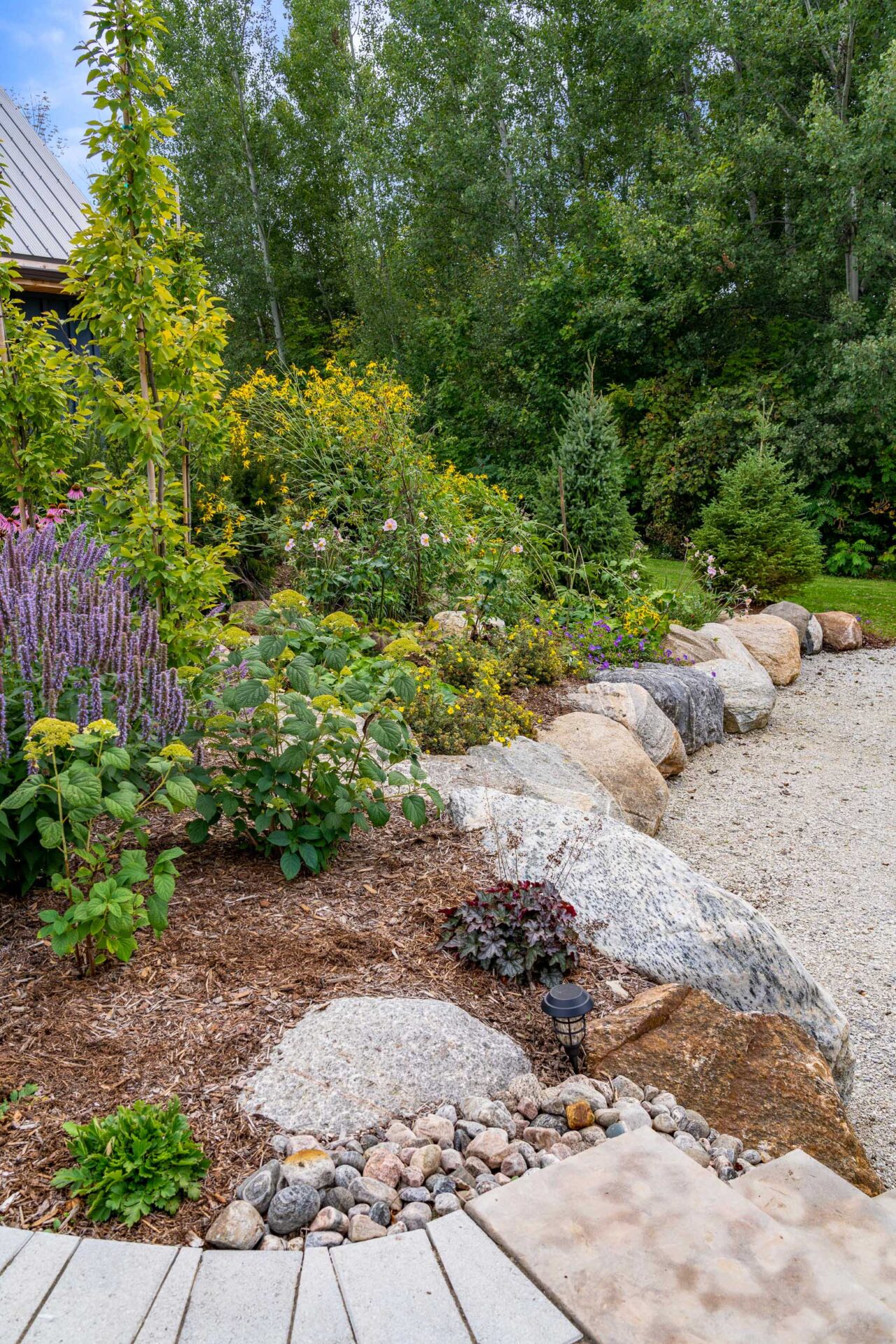
Retaining walls are often viewed purely as structural necessities, but in a hilly town like Collingwood, they can be beautiful focal points as well. Terracing a steep yard with a series of low walls creates level planting areas and also slows runoff, protecting soil during spring thaws. Using locally sourced limestone or granite blends the walls seamlessly with the natural surroundings and ensures durability in our climate. For added style, curve the wall gently rather than sticking to straight lines; curves follow the natural contours of the land and soften the look.
Consider integrating seating or planting niches into the wall itself. A low, flat capstone makes an instant bench ideal around a fire pit or along a garden path. Step back upper tiers slightly to create ledges for cascading flowers or herbs. If you enjoy the sound of water, a small recirculating waterfall built into a wall adds movement and masks street noise. When selecting materials, look for frost‑resistant concrete blocks, natural stone, or large boulders. Each should be paired with proper drainage: behind every wall, there needs to be gravel backfill and a perforated pipe to relieve hydrostatic pressure. With thoughtful design, your retaining walls will hold back soil, manage stormwater, and draw the eye; for examples of our work, visit our gallery.
What Pathway Materials (Natural Stone, Pavers, Gravel) Work Best in Collingwood?
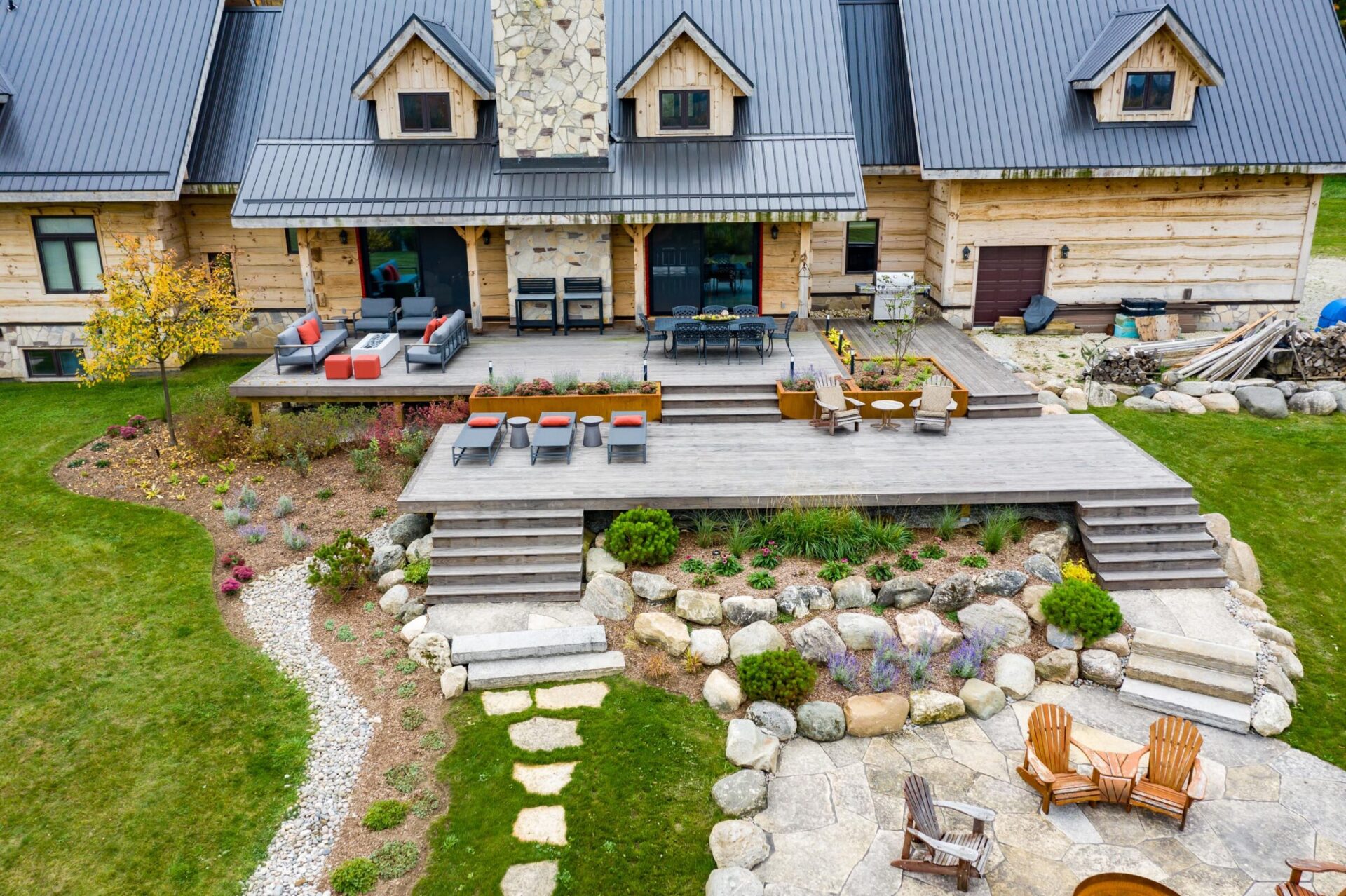
Choosing the right material for walkways is about balancing beauty, safety, and practicality. In Collingwood, surfaces must shed water quickly and provide traction during icy spells. Natural stone, such as flagstone or irregular limestone, offers a timeless look and excellent grip when laid with rough faces exposed. Setting the stones in a sand or gravel bed rather than concrete allows them to move slightly with the ground, reducing cracking during freeze‑thaw cycles. Pavers come in a wide range of shapes and colours, are non‑slip, and can handle heavy foot traffic; if a section settles or needs repair, individual units can be lifted and reset without disturbing the rest of the path.
Gravel paths are budget‑friendly and drain exceptionally well, making them ideal for informal garden trails. To keep gravel contained, edge the path with steel, stone, or brick, and lay a weed barrier underneath. For a tidy finish, use smaller crushed stone that locks together underfoot. Here’s a quick comparison:
- Natural Stone: High initial cost, long lifespan, rustic character
- Pavers: Moderate cost, versatile patterns, easy repairs
- Gravel: Low cost, excellent drainage, may need periodic raking
Whichever you choose, maintain a compacted base at least 6 inches deep with proper grading. Avoid smooth-poured concrete for primary walkways; it often cracks in cold weather and becomes slippery when wet. Thoughtfully selected materials ensure your paths are safe and inviting, guiding guests through your landscape in any season.
How Do You Plan a Low‑Maintenance, Year‑Round Hardscape That Stays Beautiful?
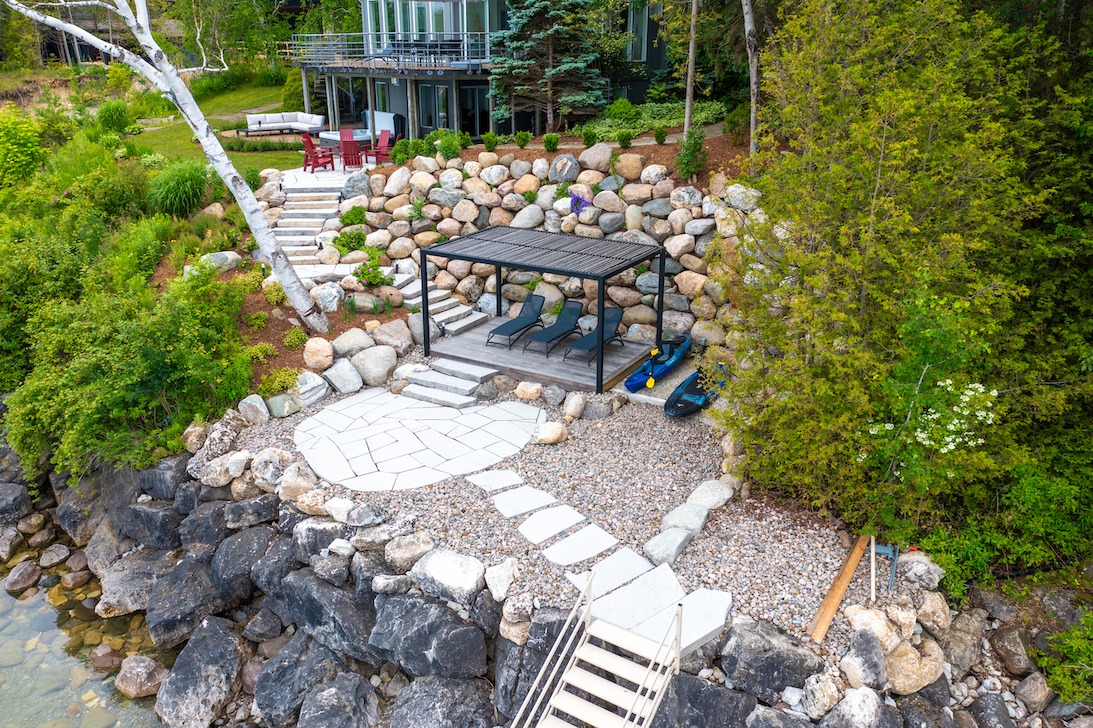
Low‑maintenance design begins with choosing materials and features that can endure Collingwood’s climate with minimal care. Dense, low‑porosity stone and high‑quality pavers resist moisture infiltration and staining. Cedar or composite decking lasts longer than untreated wood and requires little upkeep. Permeable surfaces, whether pavers or gravel, reduce puddling and ice formation, making winter maintenance easier. Planting beds edged with stone or metal prevents mulch from spilling into paths and reduces weeding.
Beyond materials, smart layout reduces chores. Keep planting beds away from main pathways to avoid snow piling up against delicate shrubs. Group plants with similar water needs and favour native perennials that thrive in local conditions. Evergreens provide structure when deciduous plants lose their leaves, while ornamental grasses add movement and interest in winter winds. Incorporate LED landscape lighting with timers or smart controls; they consume little energy and require infrequent bulb changes. A small number of fixtures placed strategically along paths, steps, and walls improve safety and ambience without a maze of wiring.
To help you prioritize, here’s a simple three‑step checklist:
- Invest in Quality Materials: Select frost-resistant pavers, stone, and wood substitutes that can withstand harsh winter conditions and prolonged exposure to moisture without cracking or deteriorating.
- Design for Drainage and Access: Grade surfaces away from structures to prevent water accumulation and allow sufficient space for snow removal equipment, ensuring clear pathways and preventing damage to your property.
- Choose Climate-Adapted Plantings: Use hardy perennials and evergreens that are native or well-suited to your climate for year-round structure, visual interest, and reduced watering needs, contributing to a sustainable and low-maintenance garden.
By following these guidelines, your yard will look polished and intentional, not just in June but also in January. For additional planning support, view our landscape design services to see how a cohesive plan reduces maintenance and improves enjoyment.
Tuning Hardscaping Ideas into Amazing Projects
Planning and building an outdoor space in Collingwood requires more than picking pretty stones; it demands an understanding of local weather patterns, soil conditions, and how you want to live outdoors. Durable patios with defined seating zones, retaining walls that tame slopes and double as functional features, thoughtfully chosen pathways, and low‑maintenance design principles all contribute to a yard that works hard for you all year. By embracing resilient materials and considering shelter, heat, and lighting, you’re not only crafting a garden, you’re investing in your quality of life.
At Garden Holistics, we see every project as an opportunity to collaborate with you to create spaces that respect the land and enrich your everyday routines. Whether you’re starting from scratch or enhancing an existing yard, the hardscaping ideas in this piece will set you on the right path. If you’re ready to take the next step or need personalized advice tailored to your property, contact us for a no‑pressure conversation. Together, we’ll turn your outdoor space into a four‑season retreat that invites you outside no matter what the forecast says.